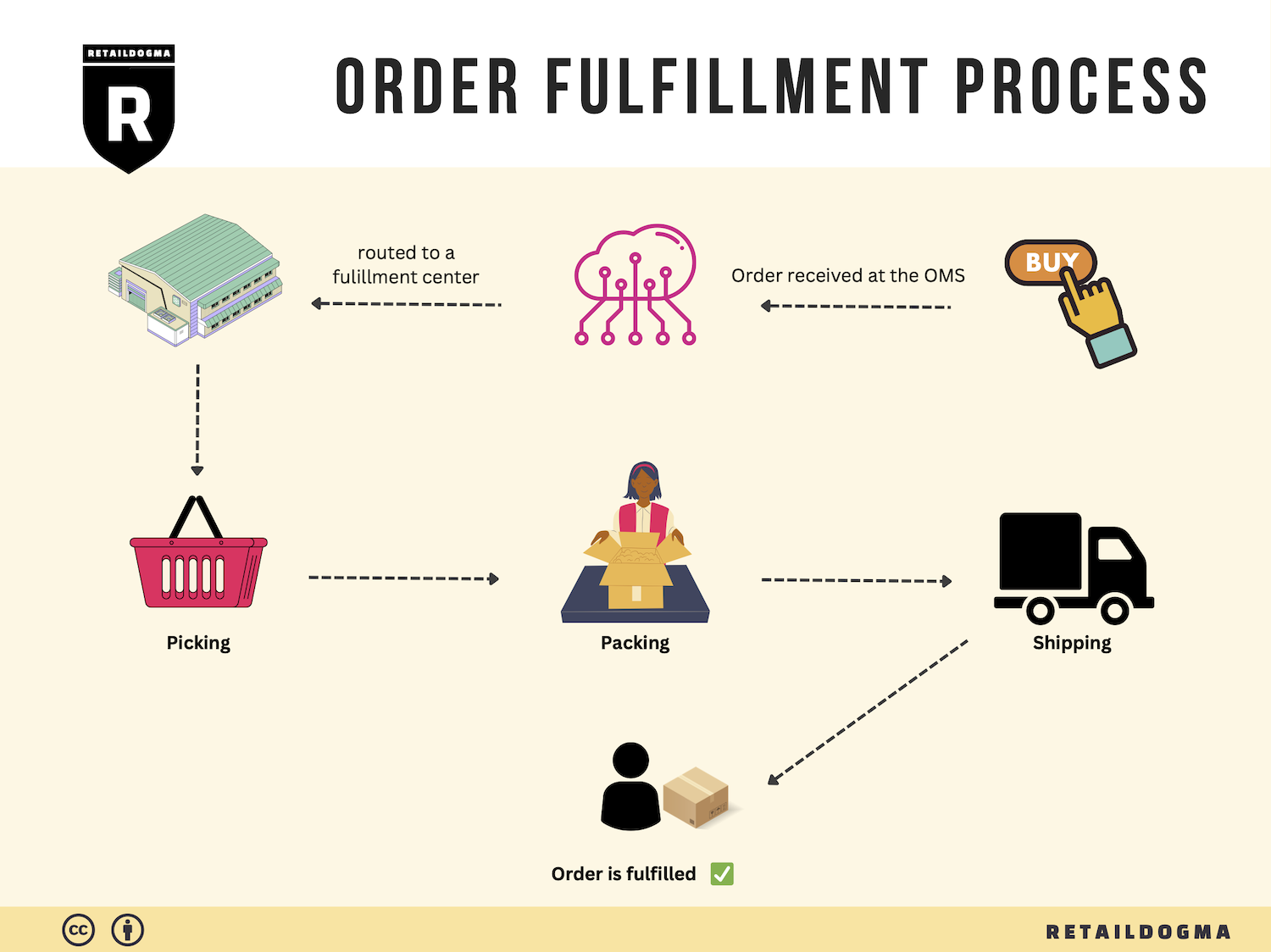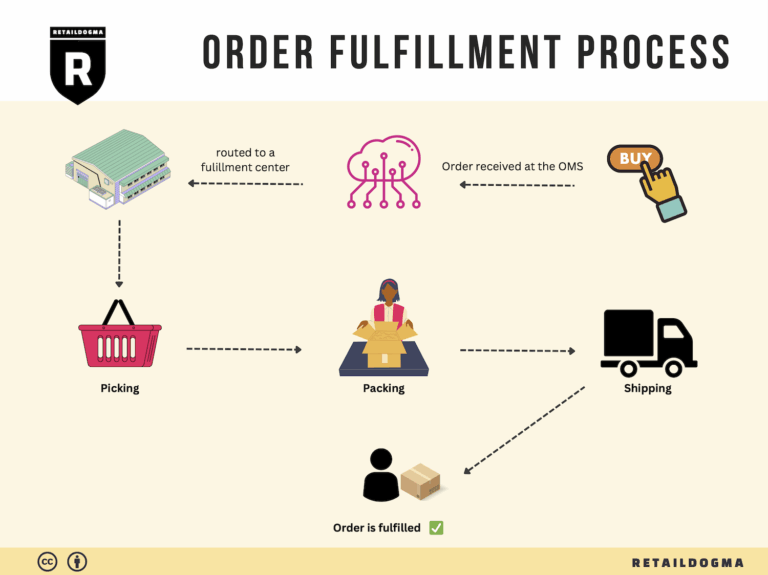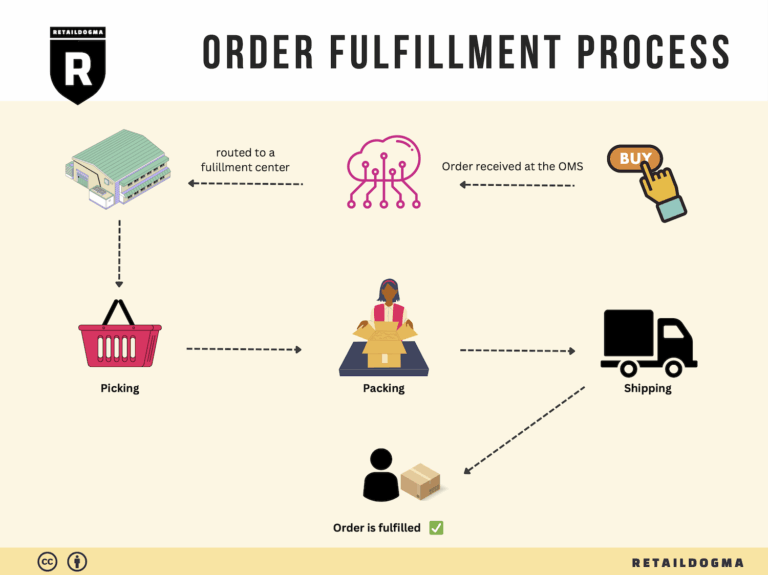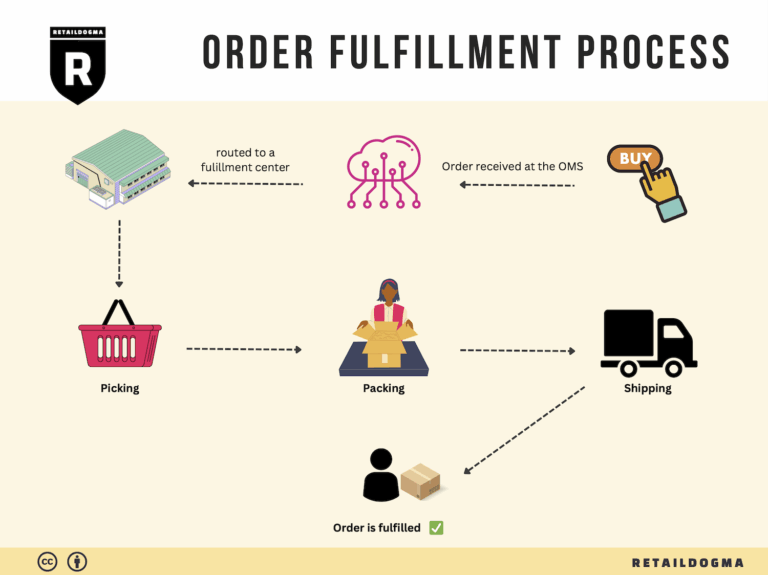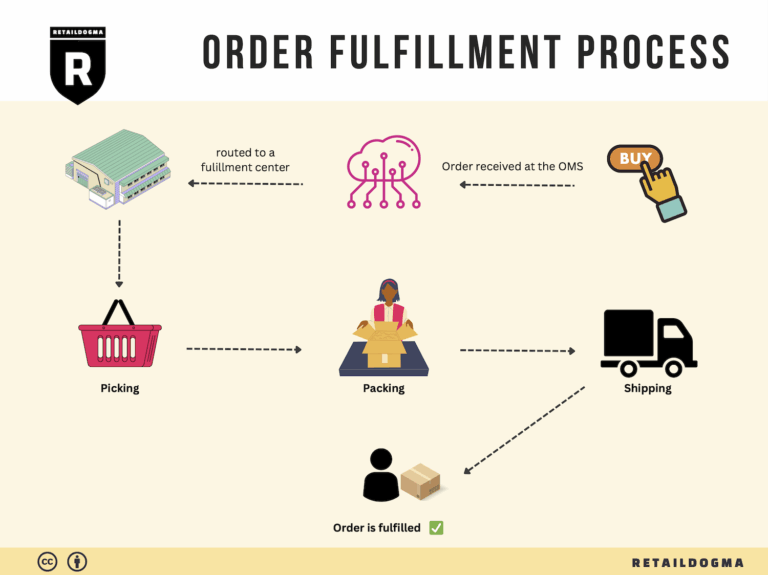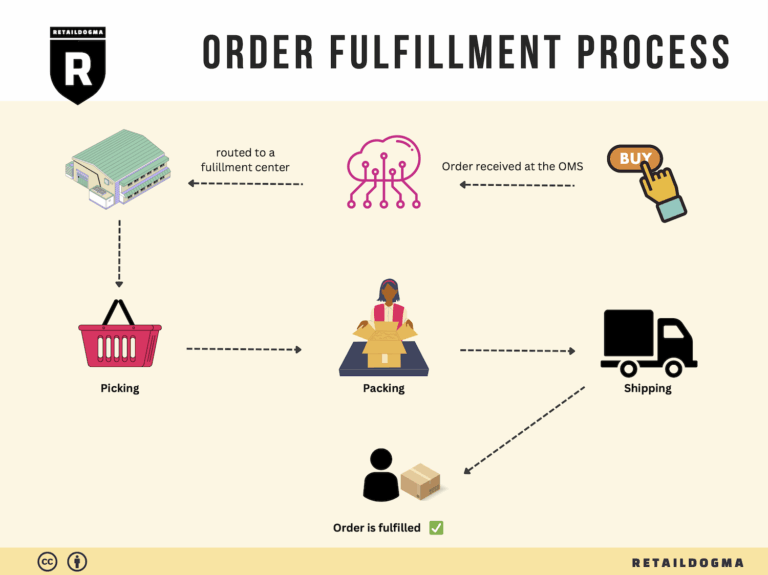What Is A Fulfillment Center? A Complete Guide (2025)
What is E-commerce Fulfillment? An Introduction for Growing Businesses
Understanding E-commerce Fulfillment
As your online business begins to thrive, you may find yourself grappling with the overwhelming task of packing and shipping orders. This common pain point can become a bottleneck in your operations, hindering growth and impacting customer satisfaction. E-commerce fulfillment is the process of getting a product from your warehouse or store to your customer’s doorstep, and it encompasses everything from inventory management to order processing, packing, and shipping.
In this guide, we will delve into the different fulfillment models available to growing businesses, including Third-Party Logistics (3PL) and Fulfilled by Amazon (FBA). Each model has its unique advantages and can significantly influence how efficiently you can deliver your products to customers. Understanding these options will help you make informed decisions tailored to your business needs.
We will also explore the core services that fulfillment partners offer. These services typically include inventory storage, order picking and packing, shipping logistics, and returns management. Aspects like order accuracy, shipping speed, and customer service are critical to maintaining a competitive edge in the e-commerce landscape. Selecting a partner that aligns with your business goals can enhance your operational efficiency and improve your customer experience.
Choosing the right fulfillment partner is a vital step in scaling your business. Factors to consider include the provider’s reliability, technology integration capabilities, and pricing structures. A well-matched partner can help streamline your logistics and allow you to focus on strategic growth initiatives rather than day-to-day operational challenges.
Pricing is another crucial element that can impact your fulfillment strategy. Understanding the costs associated with different fulfillment models and services will empower you to budget effectively and avoid unexpected expenses. We’ll provide insights into typical pricing structures and how to evaluate them against your business objectives.
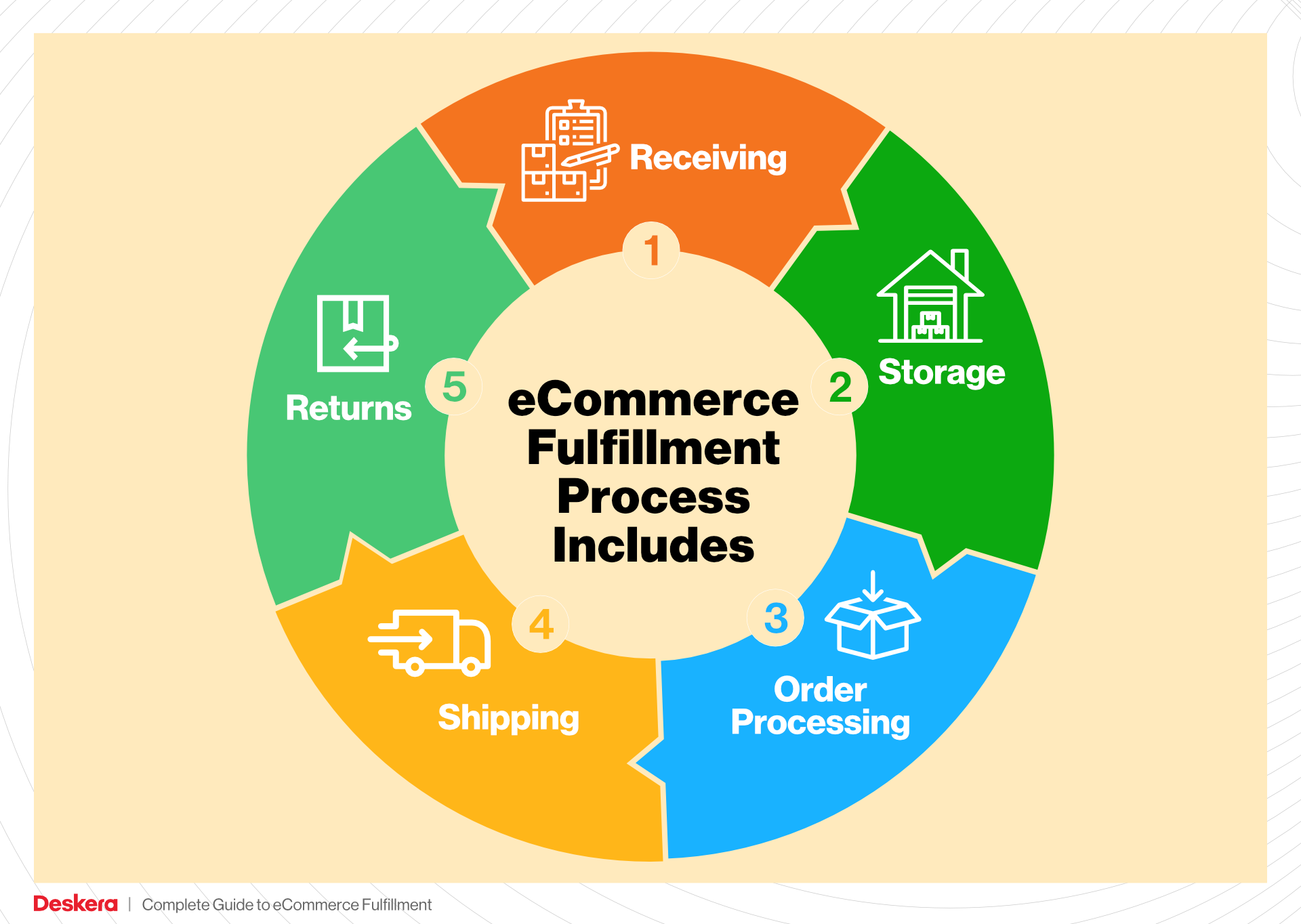
Ultimately, this guide aims to empower you with the knowledge needed to make informed decisions about your logistics and fulfillment strategies. By understanding the nuances of e-commerce fulfillment, you can streamline your operations, enhance customer satisfaction, and position your business for sustainable growth. Let’s embark on this journey to demystify the fulfillment process and unlock the potential for your growing e-commerce business.
What You’ll Learn In This Guide
- What is E-commerce Fulfillment? An Introduction for Growing Businesses
- The Order Fulfillment Process: From ‘Buy’ Button to Customer’s Door
- Comparing Fulfillment Models: In-House vs. 3PL vs. Dropshipping
- A Deep Dive into Amazon FBA: Pros, Cons, and Who It’s For
- Core Services Offered by Fulfillment Centers
- How to Choose a Fulfillment Partner: A 6-Point Checklist
- Understanding Fulfillment Pricing: A Breakdown of Common Fees
- Frequently Asked Questions (FAQs) about Fulfillment
- Conclusion: Is Outsourcing Fulfillment the Right Move for Your Business?
- Important Disclaimer
The Order Fulfillment Process: From ‘Buy’ Button to Customer’s Door
1. Receiving Inventory
The order fulfillment process begins with receiving inventory, which is crucial for maintaining an effective supply chain. When products arrive at the fulfillment center, they are checked against purchase orders to ensure accuracy. This step involves several key actions, such as inspecting for damage, counting items, and updating inventory management systems.
This process is essential because it establishes the foundation for inventory accuracy, which directly impacts order fulfillment efficiency. A key term associated with this step is SKU (Stock Keeping Unit), which is used to uniquely identify each product. Accurate receiving of inventory helps prevent stockouts and overstock situations, ensuring that when customers click the ‘Buy’ button, the products are available for immediate fulfillment.
2. Warehouse Storage
Once the inventory is received and checked, it is organized in the warehouse for efficient storage. This step involves categorizing products based on various factors such as size, demand, and type. Effective warehouse storage utilizes strategies like ABC analysis, where items are classified into three categories based on their sales volume and value.
This categorization is important because it optimizes space and ensures that fast-moving items are easily accessible, reducing the time it takes to fulfill orders. By implementing an efficient storage system, businesses can streamline the picking process, leading to quicker delivery times. A well-organized warehouse helps maintain high inventory accuracy, further enhancing the customer experience.
3. Order Picking
Order picking is the process where items are selected from storage to fulfill customer orders. This step is critical as it directly affects order accuracy and speed. Pick lists, which are documents that detail the items and quantities needed for each order, guide warehouse staff during this process.
The significance of this step lies in its impact on customer satisfaction; accurate and timely picking ensures that customers receive the correct items as quickly as possible. Various picking methods, such as batch picking or zone picking, can be employed depending on the volume of orders and the layout of the warehouse. Effective order picking minimizes errors and optimizes labor efficiency, which is vital for scaling operations.
4. Order Packing
After the items have been picked, they proceed to the packing stage. This involves securely packaging the products to prevent damage during transit and ensuring that they are presented well to the customer. Proper packing is essential not only for protecting the items but also for maintaining brand integrity.
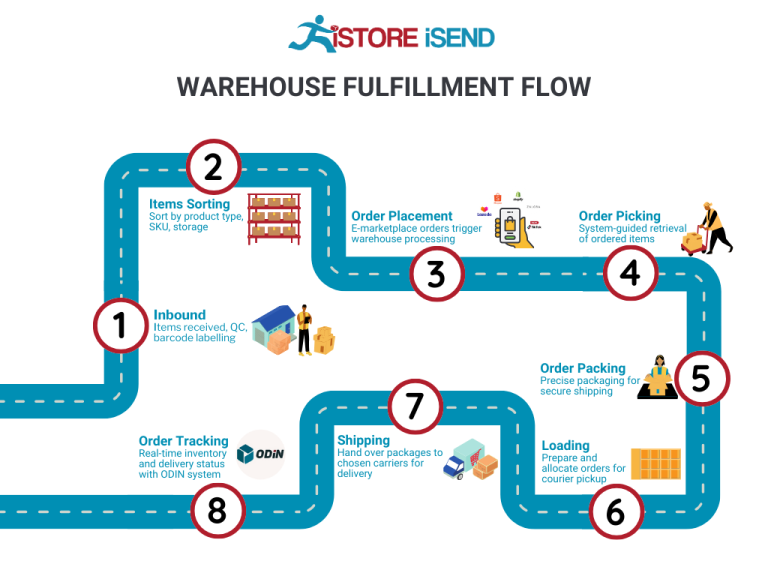
During this step, businesses often utilize packing slips and shipping labels, which provide critical information for both the fulfillment center and the customer. The importance of this process cannot be overstated; well-packed orders contribute to lower return rates and enhance customer satisfaction. Additionally, using eco-friendly packing materials can improve a company’s sustainability profile, appealing to increasingly environmentally-conscious consumers.
5. Shipping & Delivery
The final step in the order fulfillment process is shipping and delivery. Once orders are packed, they are handed over to shipping carriers for transportation to the customer’s address. This stage is crucial as it determines the speed and reliability of the delivery.
Understanding shipping options, such as standard, expedited, or same-day delivery, allows businesses to offer flexible solutions that meet customer expectations. Key terms in this stage include last-mile delivery, which refers to the final leg of the delivery journey, and is often the most critical phase in ensuring customer satisfaction. Timely and accurate shipping not only enhances customer loyalty but also fosters positive reviews and repeat business, ultimately driving growth for e-commerce operations.
In conclusion, mastering each step of the order fulfillment process is essential for e-commerce businesses aiming to scale efficiently. By focusing on accuracy, organization, and customer satisfaction at every stage—from receiving inventory to final delivery—business owners can create a seamless experience that encourages repeat purchases and fosters brand loyalty.
Comparing Fulfillment Models: In-House vs. 3PL vs. Dropshipping
Fulfillment Model Comparison
| Model | Who Handles Inventory | Best For (Business Stage) | Key Advantage | Key Disadvantage |
|---|---|---|---|---|
| In-House Fulfillment | The business itself | Established businesses with stable demand | Complete control over operations and quality | High overhead costs and complexity |
| Third-Party Logistics (3PL) | A third-party provider | Growing businesses and startups | Scalability and reduced operational burden | Less control over inventory and operations |
| Dropshipping | Supplier or manufacturer | Startups and businesses testing new products | Low initial investment and risk | Lower profit margins and reliance on suppliers |
In-House Fulfillment
In-house fulfillment involves managing the entire logistics process within the business itself. This model is best suited for established businesses that have a stable demand and sufficient resources to handle warehousing, inventory management, and order processing. The key advantage of in-house fulfillment is that it offers complete control over the entire supply chain process. Businesses can ensure quality standards, streamline operations, and customize the fulfillment process to meet specific customer needs. However, this level of control comes with significant drawbacks. The operational complexities can lead to high overhead costs, including expenses related to warehousing, staffing, technology, and inventory management. Additionally, businesses must be prepared to invest in infrastructure and technology to manage their fulfillment processes effectively, which can be a barrier for smaller companies or those with fluctuating demand.
Third-Party Logistics (3PL)
Third-party logistics (3PL) providers handle various aspects of logistics and fulfillment on behalf of e-commerce businesses. This model is particularly beneficial for growing businesses and startups that need to scale quickly without the burden of managing logistics in-house. The key advantage of using a 3PL is scalability; businesses can easily adjust their logistics operations based on demand without significant capital investment. Additionally, 3PL providers often have established systems, technology, and expertise that can enhance order processing speed and accuracy. However, the main disadvantage of using a 3PL is the reduced control over inventory and operations. Businesses must rely on their logistics partner to maintain quality standards, and any issues with the 3PL can directly impact customer satisfaction. Furthermore, businesses might face challenges in communication and coordination, especially if their 3PL partner is located far from their primary market.
Dropshipping
Dropshipping is a fulfillment model where the retailer does not keep products in stock but instead transfers customer orders and shipment details to a supplier, who then ships the goods directly to the customer. This model is ideal for startups and businesses testing new products, as it requires minimal upfront investment and allows for a broad product range without the need for inventory. The primary advantage of dropshipping is the low initial investment and risk; businesses can offer a wide variety of products without the financial burden of maintaining inventory. However, dropshipping also comes with notable disadvantages. The profit margins are typically lower due to reliance on suppliers, and businesses have less control over product quality and shipping times. Additionally, any issues with the supplier, such as stock shortages or shipping delays, can result in a poor customer experience, which can harm the brand’s reputation.
Conclusion
When deciding on a fulfillment model, e-commerce businesses must carefully consider their operational capacity, growth stage, and market dynamics. Each model has unique advantages and challenges that can significantly impact overall performance and customer satisfaction. For businesses looking for complete control and customization, in-house fulfillment may be the right choice, albeit at a higher cost. Conversely, those prioritizing scalability and reduced operational burden may find that partnering with a 3PL aligns better with their growth ambitions. Finally, for new businesses or those exploring diverse product offerings with minimal risk, dropshipping presents an attractive option, albeit with potential pitfalls related to supplier dependency. Understanding these dynamics will help entrepreneurs and operations managers make informed decisions tailored to their specific business needs.
A Deep Dive into Amazon FBA: Pros, Cons, and Who It’s For
Understanding Fulfillment by Amazon (FBA)
Fulfillment by Amazon (FBA) is a service provided by Amazon that allows sellers to store their products in Amazon’s fulfillment centers. With FBA, Amazon takes care of storage, packaging, shipping, and customer service for these products. This service is particularly beneficial for e-commerce business owners looking to leverage Amazon’s vast logistics network and customer base.
When a customer places an order for an FBA product, Amazon picks, packs, and ships the product directly to the customer. Additionally, Amazon handles all aspects of customer service and returns, allowing sellers to focus on growing their business rather than managing logistics.
How FBA Works
-
Setting Up: To use FBA, sellers need to create an Amazon seller account and enroll in the FBA program. This involves listing products and choosing which items to fulfill through Amazon.
-
Shipping Inventory: Sellers send their products to Amazon’s designated fulfillment centers. Amazon provides specific guidelines on how to package and label items to ensure efficient processing.
-
Storage and Management: Once the inventory arrives, Amazon stores it in their fulfillment centers. Sellers can monitor their inventory levels through their seller account dashboard.
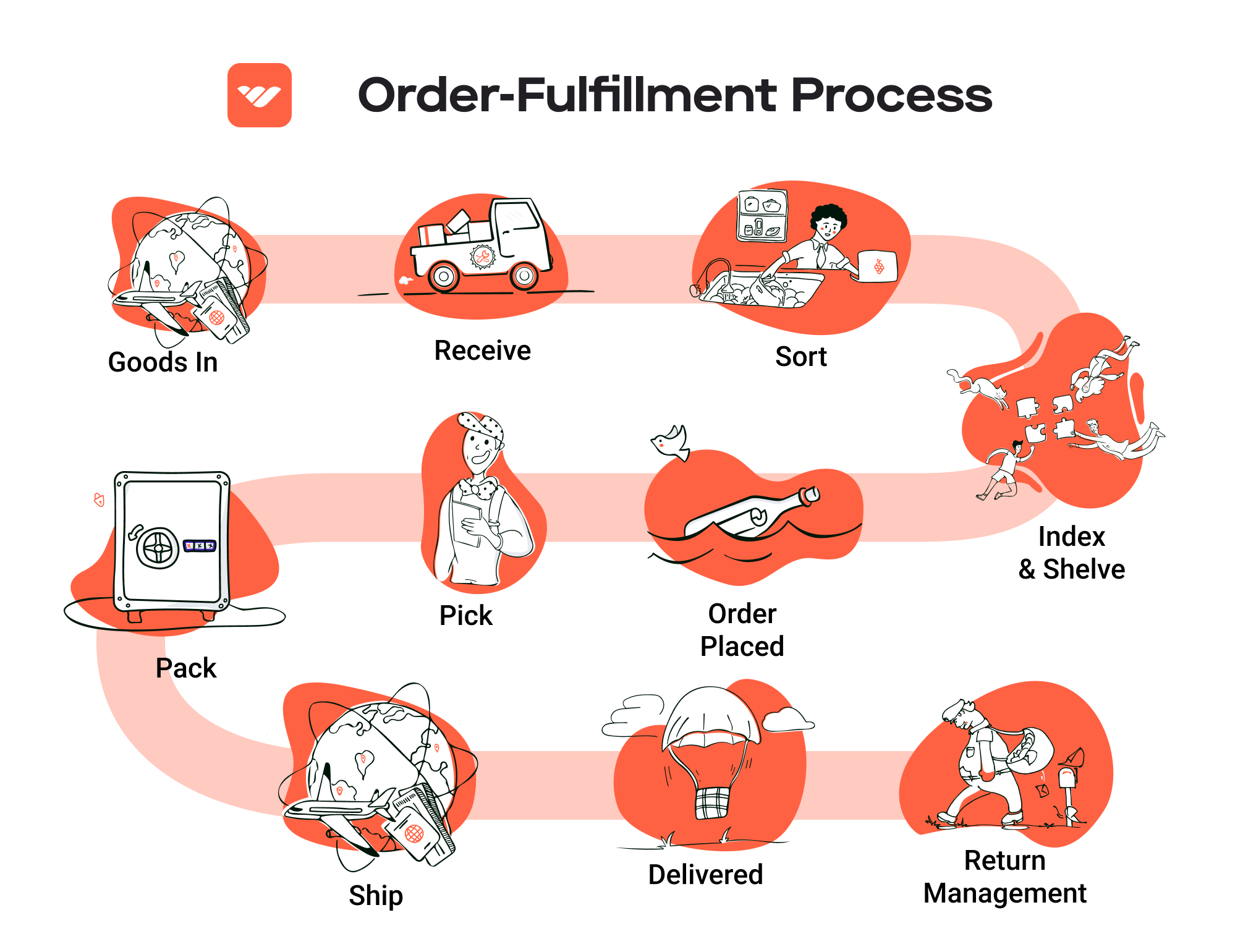
-
Order Fulfillment: When a customer orders a product, Amazon takes care of the picking, packing, and shipping. Products are eligible for Amazon Prime, which offers faster shipping options to Prime members.
-
Customer Service: Amazon manages all customer inquiries and issues related to orders, including returns and refunds, providing a seamless experience for both sellers and customers.
Pros of Using Amazon FBA
-
Prime Eligibility: One of the significant advantages of FBA is that products fulfilled by Amazon are eligible for Amazon Prime. This increases the visibility of products and can significantly boost sales, as Prime members tend to prefer Prime-eligible products.
-
Customer Trust: Leveraging Amazon’s brand reputation, FBA products often benefit from heightened customer trust. Customers are more likely to purchase from a seller using FBA due to Amazon’s well-established return policies and customer service.
-
Multi-Channel Fulfillment: FBA is not limited to Amazon sales. Sellers can use FBA to fulfill orders from their own websites or other marketplaces, allowing for a streamlined inventory and order management process across different sales channels.
-
Scalability: FBA allows businesses to scale operations without the need for significant investments in warehousing and logistics. As sales grow, sellers can easily send more inventory to Amazon without worrying about storage space.
-
Time Savings: By outsourcing fulfillment to Amazon, sellers can save time on logistics and focus on marketing, product development, and other critical areas of their business.
Cons of Using Amazon FBA
-
High Fees: While FBA offers many conveniences, it also comes with significant costs. Sellers incur storage fees for keeping their products in Amazon’s warehouses and fulfillment fees for each order processed. These costs can add up quickly, particularly for low-margin products.
-
Strict Inventory Rules: Amazon has stringent rules regarding inventory management, including requirements for labeling and packaging. Sellers must comply with these regulations or risk incurring additional fees or having their products removed from the platform.
-
Commingling Risks: Amazon often commingles inventory from different sellers to streamline the fulfillment process. This can lead to situations where a seller’s product might be shipped to a customer alongside products from other sellers. This raises concerns about brand integrity and quality control, as sellers may receive negative feedback due to issues with commingled inventory.
-
Limited Control Over Fulfillment: Once products are sent to Amazon, sellers have limited control over the fulfillment process. Issues like mismanagement of inventory, delays in shipping, or customer service problems can negatively impact a seller’s reputation and sales.
-
Dependency on Amazon: Relying heavily on FBA can create a dependency on Amazon’s platform. Changes in Amazon’s policies, algorithms, or fees can significantly affect a seller’s business operations and profitability.
Who is FBA Best For?
Fulfillment by Amazon is best suited for:
-
Small to Medium-Sized Businesses: Businesses that lack the resources to manage their own logistics can benefit significantly from FBA, allowing them to scale without the overhead of warehousing and shipping.
-
E-commerce Entrepreneurs: New sellers looking to enter the e-commerce space can leverage FBA’s infrastructure to quickly establish a presence on Amazon and reach millions of potential customers.
-
Sellers with High Sales Volume: Businesses that sell high volumes of products can benefit from the efficiency of FBA, as the costs of fulfillment can be offset by increased sales.
-
Brands Seeking Brand Trust: Companies that want to build trust and credibility with customers can leverage Amazon’s reputation and customer service capabilities through FBA.
-
Multi-Channel Sellers: Sellers who operate across different platforms and marketplaces will find FBA’s multi-channel fulfillment capabilities particularly beneficial, allowing for streamlined operations.
In conclusion, while FBA offers numerous advantages for e-commerce businesses, it is essential for sellers to weigh these against the potential drawbacks. Understanding the intricacies of FBA can empower sellers to make informed decisions that align with their business goals and operational capabilities.
Core Services Offered by Fulfillment Centers
Inventory Management & Warehousing
Inventory management and warehousing are foundational services provided by fulfillment centers. This service encompasses the receipt, storage, and organization of products in a dedicated warehouse facility. Fulfillment centers utilize advanced inventory management systems that track stock levels, manage reorders, and monitor product performance in real-time.
Benefits:
-
Optimized Space Utilization: Fulfillment centers are designed to maximize storage efficiency, using various techniques such as pallet racking and shelving systems. This ensures that e-commerce businesses can store more products in a smaller footprint, reducing overhead costs.
-
Real-Time Inventory Visibility: With sophisticated inventory management software, businesses gain visibility into their stock levels. This information helps in making informed purchasing decisions, reducing the risk of stockouts or overstock situations, and ultimately improving cash flow.
-
Scalability: As e-commerce businesses grow, their inventory needs change. Fulfillment centers can easily scale storage capacity to accommodate increased demand, allowing businesses to focus on growth without the logistical burden of managing warehouse space.
Pick and Pack Services
Pick and pack services refer to the process of selecting items from inventory (picking) and preparing them for shipment (packing). This is a critical step in the order fulfillment process and is often the most labor-intensive.
Benefits:
-
Efficiency and Speed: Fulfillment centers employ streamlined processes and trained staff to pick and pack orders quickly. This efficiency translates into faster shipping times, enhancing customer satisfaction and retention.
-
Accuracy: Advanced picking technologies, such as barcode scanning and automated systems, minimize errors in order fulfillment. High accuracy rates reduce the costs associated with returns and exchanges, ultimately improving profitability.
-
Customization: Many fulfillment centers offer customizable packing options, allowing businesses to brand their packaging or include promotional materials. This adds a personal touch to orders and can enhance customer loyalty.
Kitting and Assembly
Kitting and assembly services involve the grouping of individual items into ready-to-ship sets or kits, which may include bundling products or assembling components into a final product. This service is particularly valuable for businesses that offer multi-product sets or require assembly before shipment.
Benefits:
-
Time Savings: Outsourcing kitting and assembly to fulfillment centers allows e-commerce businesses to save time and focus on core activities such as marketing and sales. This is especially important for startups or smaller businesses that may lack the resources for in-house assembly.
-
Quality Control: Fulfillment centers often have quality control processes in place to ensure that kits are assembled correctly and meet quality standards. This reduces the likelihood of customer complaints and enhances brand reputation.
-
Flexibility: Kitting services can easily adapt to seasonal promotions or changes in product offerings. Businesses can quickly launch new products or seasonal bundles without the need for significant investment in new assembly lines or processes.
Returns Management (Reverse Logistics)
Returns management, or reverse logistics, involves the processes related to handling returned goods. This service encompasses everything from processing returns to restocking items or managing defective products.
Benefits:
-
Enhanced Customer Experience: A well-managed returns process can significantly improve customer satisfaction. Fulfillment centers facilitate easy returns with clear policies, pre-paid shipping labels, and efficient processing, fostering trust and loyalty among customers.
-
Cost Efficiency: Efficient returns management minimizes the costs associated with handling returns. By quickly restocking items or processing refunds, fulfillment centers help businesses maintain healthy cash flow and reduce losses from unsold inventory.
-
Data Insights: Returns management provides valuable insights into customer behavior, product quality, and inventory management. Analyzing return reasons can inform product improvements and help businesses make better purchasing decisions.
Conclusion
Fulfillment centers play a vital role in the success of e-commerce businesses by providing essential services that streamline operations, enhance customer experience, and allow for scalable growth. By leveraging the expertise and resources of fulfillment centers, business owners can focus on their core competencies while ensuring efficient order fulfillment and logistics management. Whether it’s managing inventory, optimizing the picking and packing process, assembling products, or handling returns, fulfillment centers provide the support needed to thrive in the competitive e-commerce landscape.
How to Choose a Fulfillment Partner: A 6-Point Checklist
Location & Warehouse Network
Importance: The geographical location of your fulfillment partner can significantly impact shipping times, costs, and overall customer satisfaction. A partner with multiple warehouses strategically placed near major markets can ensure faster delivery and lower shipping expenses.
Questions to Ask:
– Where are your warehouses located, and how do they align with my target market?
– Do you have the ability to open additional locations if needed?
– How do you handle shipping logistics across different regions?
Technology & Integrations
Importance: A robust technology platform can streamline operations, enhance order accuracy, and provide real-time visibility into inventory and order status. It’s essential to ensure that your fulfillment partner can integrate seamlessly with your existing e-commerce platforms and tools.
Questions to Ask:
– What technology do you use for inventory management, order processing, and shipping?
– Can your system integrate with my e-commerce platforms (e.g., Shopify, Amazon, eBay)?
– Do you offer real-time tracking and reporting capabilities?
Specializations (e.g., Cold Storage, Oversized Items)
Importance: Different products require different handling and storage conditions. If you sell perishable items, oversized products, or specialized goods, your fulfillment partner must have the necessary capabilities to manage these specific needs.
Questions to Ask:
– What types of products do you specialize in handling?
– Do you have specific facilities for temperature-sensitive items or oversized products?
– Can you accommodate unique packaging or kitting requirements for my products?
Scalability & Capacity
Importance: As your business grows, so will your fulfillment needs. A fulfillment partner must be able to scale operations efficiently without compromising service quality. Understanding their capacity limits and flexibility to grow with you is crucial.
Questions to Ask:
– What is your current capacity for order processing, and how do you handle seasonal spikes?
– How quickly can you scale operations if my order volume increases?
– Do you have any minimum order requirements or limits on storage space?
Pricing and Contracts
Importance: Transparent pricing structures and contract terms are vital to avoid unexpected costs. Understanding how your partner charges for services—such as storage, pick and pack, and shipping—can help you maintain healthy profit margins.
Questions to Ask:
– Can you provide a detailed breakdown of your pricing structure?
– Are there any hidden fees I should be aware of (e.g., for returns, storage, or special handling)?
– What is the contract length, and are there options for termination or renegotiation?
Customer Support & Reviews
Importance: Reliable customer support is essential for addressing issues quickly and effectively. Additionally, researching reviews and testimonials can provide insights into the partner’s reliability and service quality.
Questions to Ask:
– What customer support channels do you offer (e.g., phone, email, chat)?
– How do you handle order discrepancies or customer complaints?
– Can you provide references or case studies from similar businesses you’ve worked with?
Conclusion
Choosing the right fulfillment partner is a critical decision that can impact your e-commerce business’s efficiency and customer satisfaction. By using this checklist, e-commerce business owners, operations managers, and entrepreneurs can make informed choices that align with their operational needs and growth strategies. Remember, it’s not just about finding a partner; it’s about finding the right partner who can support your business as it scales.
Understanding Fulfillment Pricing: A Breakdown of Common Fees
Initial Setup Fees
Initial setup fees are one-time charges that e-commerce businesses may incur when partnering with a fulfillment center. These fees often cover the cost of account creation, system integration, and the initial onboarding process. Depending on the provider, these fees can vary widely.
Typically, setup fees can range from $0 to several hundred dollars. Some fulfillment centers waive this fee to attract new clients, especially if they offer a straightforward onboarding process. However, it’s essential to understand what the setup fee includes. Does it cover all necessary integrations with your e-commerce platform, or are there additional costs for connecting to multiple sales channels? Clarifying these details upfront can prevent unexpected charges later.
Receiving Fees
Receiving fees are charged for the process of accepting and inspecting incoming inventory. This fee is usually calculated based on the number of pallets or units being received. For instance, some fulfillment centers may charge a flat rate per pallet, while others might have a tiered pricing model based on volume.
Receiving fees typically range from $20 to $50 per pallet, depending on the complexity of the receiving process. Factors such as whether the goods need to be inspected, labeled, or sorted can impact these fees. Be sure to ask about any additional costs associated with special handling or quality checks to get a complete picture of your potential expenses.
Storage Fees (per pallet/bin)
Storage fees are ongoing charges incurred for holding inventory in a fulfillment center’s warehouse. These fees are typically calculated on a monthly basis, either per pallet or per bin, depending on the provider’s storage configuration.
The cost of storage can vary significantly based on location and the type of goods stored. For example, standard storage fees might range from $10 to $30 per pallet per month. However, if your products require climate control or other special conditions, expect to pay a premium. Additionally, some fulfillment centers charge for unused space, so understanding their pricing structure is crucial for budgeting your storage costs effectively.
Pick & Pack Fees (per item/order)
Pick & pack fees are incurred each time an item is picked from inventory, packed for shipping, and prepared for delivery. These fees can be structured in various ways: per item, per order, or based on the complexity of the packing process.
On average, pick and pack fees can range from $0.50 to $2.00 per item. If your orders frequently include multiple items or require special packaging, you may encounter higher fees. It’s also common for fulfillment centers to offer volume discounts, so negotiating a better rate based on your projected order volume can lead to significant savings.
Shipping Fees
Shipping fees encompass the costs associated with transporting orders to customers. These fees can vary based on several factors, including the shipping method (standard, expedited, etc.), package weight, dimensions, and destination.
Most fulfillment centers pass on the shipping costs they incur from carriers, such as UPS or FedEx, and may add a handling fee on top of that. Shipping fees can range from a few dollars for local deliveries to much higher for international shipping. It’s essential to understand how the fulfillment center calculates these fees and whether they provide access to discounted shipping rates.
Tips for Getting an Accurate Quote
To ensure you receive an accurate quote from a fulfillment center, consider the following tips:
-
Be Transparent About Your Needs: Clearly outline your expected order volume, types of products, and specific requirements (such as temperature control or custom packaging) when requesting a quote.
-
Ask for Itemized Pricing: Request a detailed breakdown of all fees, including setup, receiving, storage, pick & pack, and shipping. This transparency will help you compare different providers effectively.
-
Inquire About Volume Discounts: If you anticipate growth, ask about potential discounts for higher order volumes or long-term contracts.
-
Consider Additional Services: Many fulfillment centers offer value-added services like returns management, kitting, or marketing support. Inquire about these options and their associated costs, as they can impact your overall fulfillment strategy.
-
Review Contract Terms: Carefully read the terms and conditions of the contract to understand any hidden fees or obligations that could affect your costs.
By understanding these common fulfillment pricing models and actively seeking clarity from potential partners, you can make informed decisions that will help streamline your e-commerce operations and enhance profitability.
Frequently Asked Questions (FAQs) about Fulfillment
1. What is a fulfillment center?
A fulfillment center is a specialized warehouse that manages the storage, packing, and shipping of products for e-commerce businesses. Unlike traditional warehouses, fulfillment centers focus on order processing, ensuring that items are picked, packed, and shipped efficiently to customers.
2. What’s the difference between a warehouse and a fulfillment center?
While both warehouses and fulfillment centers store inventory, the key difference lies in their functions. Warehouses primarily focus on storage, often for long-term inventory management. In contrast, fulfillment centers are designed for quick order processing and shipping, catering specifically to the needs of e-commerce businesses.
3. What is a 3PL?
A Third-Party Logistics (3PL) provider offers outsourced logistics services, including warehousing, fulfillment, and shipping. By partnering with a 3PL, businesses can leverage specialized expertise and resources, allowing them to scale operations without the burden of managing logistics in-house.
4. How much do fulfillment services cost?
Fulfillment service costs can vary widely based on factors like order volume, storage needs, and the specific services required (e.g., pick and pack, shipping). Typically, costs can range from $1 to $5 per order, plus storage fees that can be charged per pallet or cubic foot. It’s crucial to obtain quotes tailored to your specific needs.
5. What are the benefits of using hou8 – Amazon fulfillment center?
Using hou8 can enhance your e-commerce operations through quick turnaround times (24-36 hours for FBA orders), no onboarding fees, and transparent pricing. Additionally, their integration with multiple e-commerce platforms (like Shopify and eBay) streamlines operations, enabling a more efficient order fulfillment process.
6. How does the order fulfillment process work at a fulfillment center?
The order fulfillment process typically involves several steps: receiving inventory, storing products, processing orders, picking items from shelves, packing them securely, and shipping them to customers. Fulfillment centers utilize technology to streamline these processes, ensuring accuracy and efficiency.
7. What is the average order accuracy rate for fulfillment centers?
Reputable fulfillment centers, like hou8, often maintain high order accuracy rates, typically around 95%. This means that 95 out of 100 orders are processed correctly, which is essential for maintaining customer satisfaction and trust.
8. How can I track my inventory in a fulfillment center?
Most fulfillment centers provide inventory management systems that allow businesses to track stock levels in real-time. These systems often integrate with your e-commerce platform, providing updates on inventory status, order fulfillment, and shipment tracking.
9. Can I manage returns through a fulfillment center?
Yes, many fulfillment centers, including hou8, offer return management services. This includes processing returned items, updating inventory levels, and restocking products as necessary. Efficient return management is crucial for maintaining customer satisfaction and loyalty.
10. What factors should I consider when choosing a fulfillment partner?
When selecting a fulfillment partner, consider factors such as pricing structure, location, shipping capabilities, technology integration, order accuracy rates, customer support, and the ability to scale with your business. Assessing these factors can help ensure that the fulfillment center aligns with your operational needs and growth goals.
Conclusion: Is Outsourcing Fulfillment the Right Move for Your Business?
Evaluating the Decision to Outsource Fulfillment
Outsourcing fulfillment can be a transformative decision for e-commerce businesses aiming for growth. By leveraging a fulfillment service, you can save invaluable time that can be redirected towards core business activities such as product development, marketing, and customer engagement. Fulfillment centers streamline the logistics process, handling everything from inventory storage to order processing, thus allowing you to focus on scaling your operations.
Scalability is another compelling reason to consider outsourcing. As your business grows, so do the complexities of managing inventory and fulfilling orders. A reliable fulfillment partner can easily adapt to your changing needs, whether that involves seasonal spikes in demand or expanding your product lines. This flexibility ensures that you can meet customer expectations without the burden of overhead costs associated with scaling your own logistics operations.
Moreover, partnering with a fulfillment service brings expertise to the table. Established providers have refined processes, advanced technology, and industry knowledge that can enhance efficiency and accuracy. This expertise translates to higher order accuracy rates and improved customer satisfaction, both of which are crucial for maintaining a competitive edge.
However, the success of outsourcing hinges on choosing the right partner. It is essential to conduct thorough research, evaluate potential providers based on their track record, service offerings, and alignment with your business goals. A strategic partnership can propel your business forward, while a poor choice can lead to disruptions and customer dissatisfaction.
To determine if outsourcing fulfillment is the right move for your business, consider conducting an audit of your current shipping and logistics processes. Assess areas where you face challenges, and evaluate whether a fulfillment partner could alleviate those pain points. Taking this proactive step can position your business for sustainable growth and success in the dynamic e-commerce landscape.
Important Disclaimer
⚠️ Important Disclaimer
The information in this guide is for educational purposes. Fulfillment services, pricing, and platform features change frequently. Always conduct your own due diligence and consult with providers directly before making business decisions.
